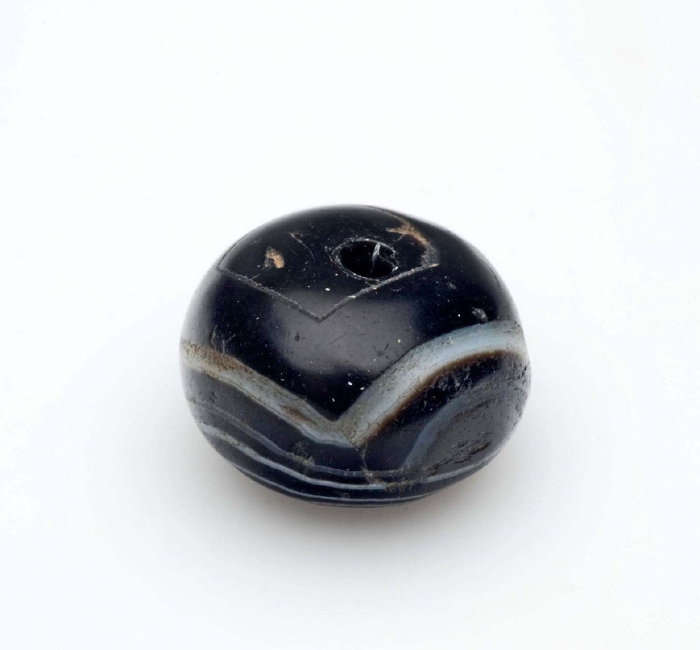Humanity’s fascination with rocks and minerals is as ancient as civilization itself. From the dawn of history, various stones have not only adorned us but also played pivotal roles in our rituals and cultural practices. While some of the stones we cherish today are relatively new to the scene, others boast a legacy that stretches back thousands of years, deeply embedded in the fabric of ancient societies.
Join us as we delve into the minerals that captivated our ancestors, exploring their essence and the myriad ways in which they were harnessed.
1. Lapis Lazuli
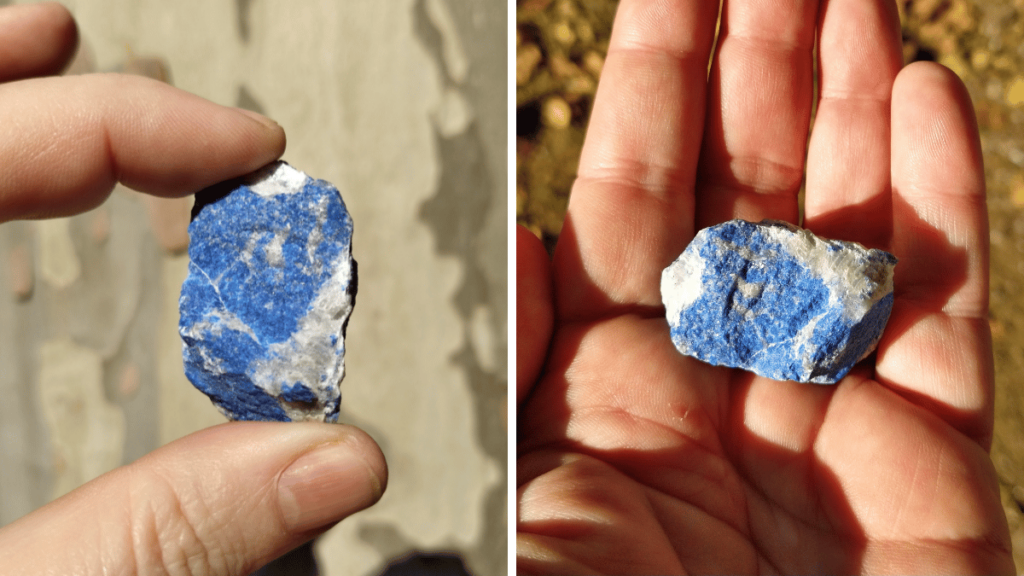
Valued for its deep blue hue, Lapis Lazuli has been a symbol of prestige since antiquity.
Lapis is a deep blue, relatively soft stone that is largely defined by the presence of lazurite. Lazurite itself is a deep blue mineral that forms into masses, but lapis lazuli almost always contains other minerals since it’s a rock.
The other minerals and stones included in lapis are calcite, limestone, sodalite, and pyrite. Other minerals, such as hornblende, may also be included in smaller amounts. The grading of lapis lazuli is done mainly by its inclusion of the deep blue mineral lazurite, with deep blue pieces being the most valuable and those heavily intruded upon by limestone and calcite (forming white streaks) being less valuable.
Lapis mining is known as far back as the 7th millennium BC, positioning it as one of the earliest desirable stones used by man. Beads have even been found in graves that date back to the Neolithic era. Lapis lazuli was, and still is, most often mined in Afghanistan, where rich deposits of the material are found.
Lapis is mainly used for artwork and as a pigment. Specifically, ground-up, high-grade lapis lazuli creates the pigment known as ultramarine. Ultramarine is a deep blue that was astonishingly expensive until recent times. To this day it remains a favorite for people creating artwork with stones, whether inlay, carving, or cabochons.
2. Carnelian
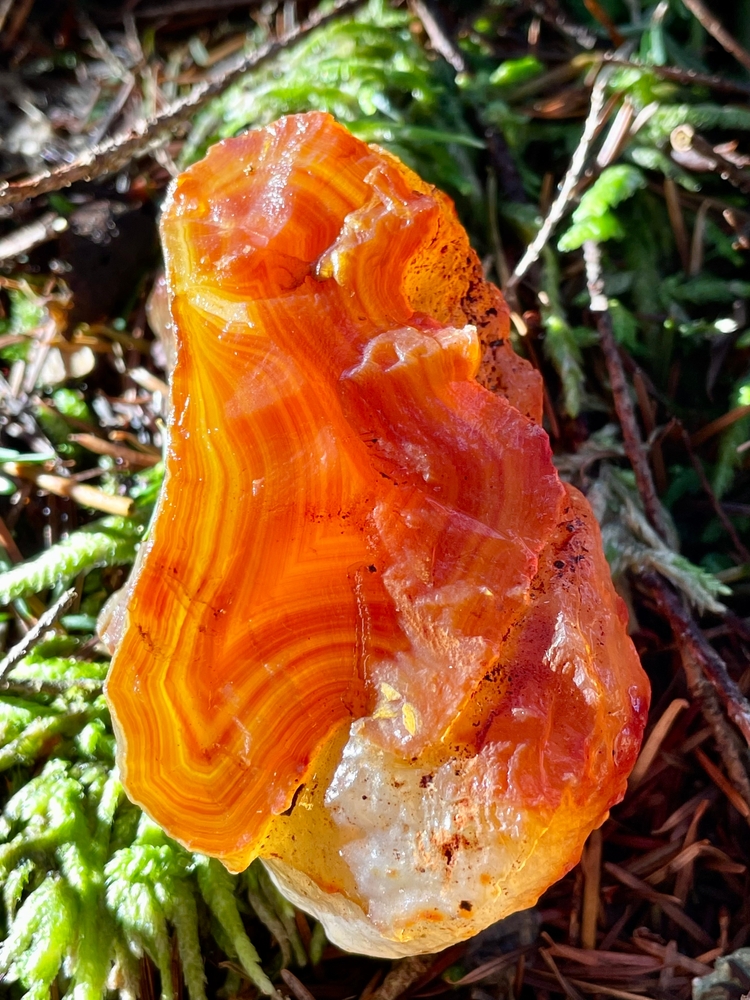
Carnelian’s warm tones have adorned the finest jewelry and warded against evil since the days of ancient Egypt.
Carnelian is a red-orange variety of chalcedony that has an extensive history of use. The coloration comes from the inclusion of iron oxide, which most of us know as rust. It becomes trapped in the microcrystalline lattice of the chalcedony and creates an opaque-to-translucent red stone.
Carnelian’s rich coloration and structural stability have long made it a favorite among artists. Using ancient methods it would have been a fairly hard material to work since chalcedony sits at a 7.0 on the Moh’s scale, but it created long-lasting artifacts. It was often used in jewelry, particularly in signet rings, as well as inlay and carvings.
While every rock seems to have a fabricated history of use as a talisman these days, it turns out that carnelian actually has that provenance. It was used as a ward against evil forces as far back as the Egyptians and was reportedly used by the Greeks and Sumerians for much the same reason. There’s a reason it’s use has persisted when other red minerals could have filled in the gap long ago.
Carnelian is the same thing as sard. There’s no “official” grading difference between the two, in general sard is just when the carnelian has acquired enough of a brown tone that people no longer call it carnelian.
It remains a popular stone to this day, especially when found as carnelian agate. In this form, it becomes nodules which will have alternating layers of red with white in the typical agate banding pattern. Carnelian is found in many places, but some of the most prized nodules these days seem to come out of the Pacific Northwest where carnelian agate is a relatively common find.
3. Onyx
The elegance of Onyx has been favored for centuries, from Roman seals to Victorian brooches.
Onyx is a black-and-white banded form of chalcedony. Most of the stuff you see sold in jewelry nowadays is either dyed Brazilian agate or some variation of Mexican banded calcite (generally sold as Mexican onyx) but the original stuff can be found on occasion.
These alternating bands, in a proper onyx nodule, are generally thick and deeply colored. That’s the key to the way it was primarily used. The art objects produced most often from the material are cameos, which were created by carefully working the stone. These are generally intricate carvings in white, standing out on a black background.
These artifacts were also made from other forms of agate, but these often don’t have the same visual impact as the traditional black-and-white onyx. This method of carving was particularly common among the Greeks and Romans, and they were formed into jewelry most often.
Most modern cameos are produced from other materials entirely, but here and there traditional ones crop up in certain circles. The stone’s long history of use doesn’t seem to have had much to do with ritual, it was simply a handy medium for creating these two-tone, beautiful carvings. The hardness of chalcedony has also made sure that many of them have long survived the civilizations that produced them.
4. Amber
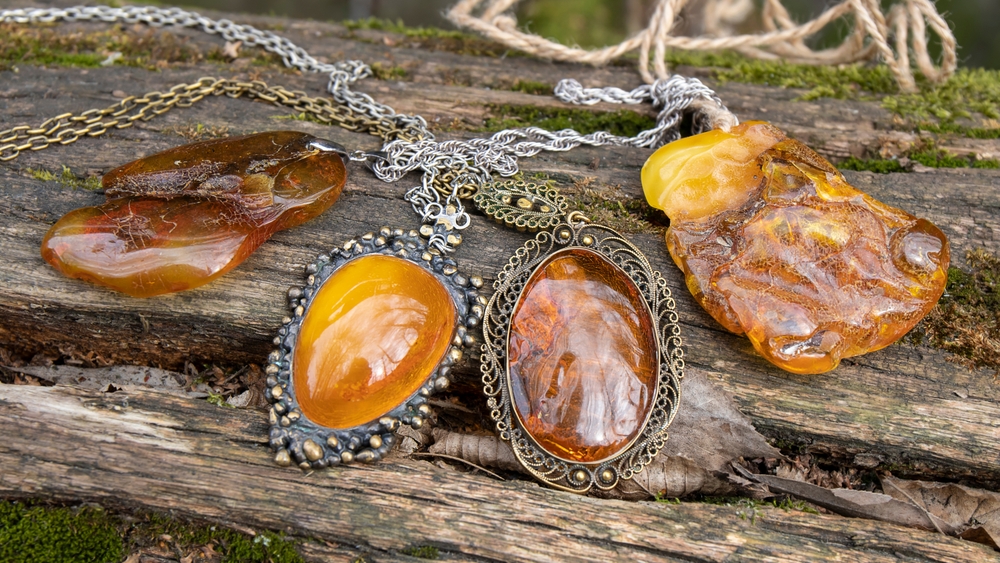
Amber, nature’s time capsule, has captured prehistoric life, fascinating humanity since the Stone Age.
Amber is a strange material, and it’s no wonder that early civilizations had a fascination with the stuff. Amber is a polymerized tree sap, one that’s been so pressed down by time and weight after being released that it essentially becomes a plastic material. It’s distinct from the less mature copal, which is simply tree resin old enough it has lost its aromatic components.
Amber feels fake in the hand if you’ve never held it before. Unlike other stones, it’s lightweight, room temperature, and it feels like plastic. Which… it kind of is. You have to remember, however, that plastics are a relatively new innovation and it would have been a very unique material in prehistory.
Amber is soft, easily polished, and very workable. It’s been found made into prehistoric totems and fetishes, fashioned into beads, and a variety of other creative forms. It appears that earlier cultures mainly valued the high-clarity, relatively unincluded variety. These days, most collectors actively seek out pieces with bits of prehistoric plant and insect life. The rare vertebrates found in amber are essentially priceless, and far outside of the price range for most collectors.
Amber was also used for its scent. The ancient pine scent that washes from it makes it a hot item for both perfumes and incense. It’s been replaced in modern times, as the scent of amber is quite faint, but it enjoyed a long history as a staple for both industries.
Overall, amber is a unique material and it’s no surprise that it fascinated early humans to such a degree. While most now associate it with Jurassic Park, it remains a favorite item among stone collectors and is often still collected from the same regions. In particular, Baltic amber remains a fast favorite although blue amber from the Dominican Republic has also become quite popular in recent years.
5. Jade
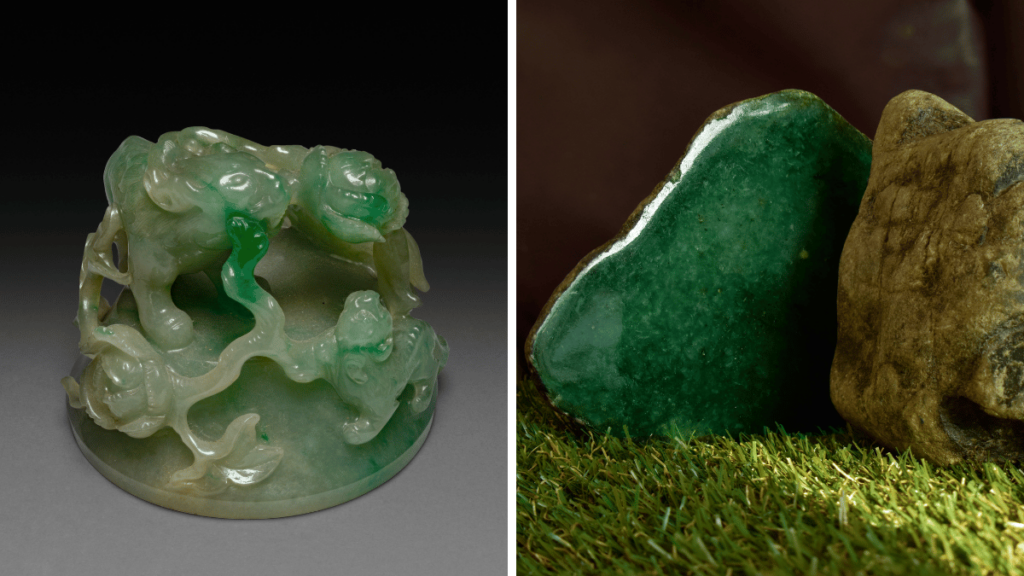
Jade’s toughness made it a stone of choice from Neolithic tools to the emperors of China.
Jade is a hard stone, made up of different minerals in the pyroxene group. Until recently, jade was a bit hard to define and many of the classic “jade” artifacts have turned out to be other forms of green stone. What all stones called jade have in common is a deep green coloration and a compact, tight structure.
Jade is actually divided into two main groups under modern classification. Jadeite jade is the more valuable of the two and is comprised of various minerals in the pyroxene group, generally in stones high in aluminum and sodium. Nephrite jade is actually comprised of a different mineral series, generally made up of magnesium and calcium-rich tremolite. This is a recent discovery, dating back only to the 1863 work of the French geologist Alexis Damour.
Jade is mainly known for its use in Asia. To this day, the primary source of green jadeite is primarily mined in Myanmar. Other colors of jade are present, and some of the more unique ones come from different regions. There doesn’t seem to have been a distinction made between the types early on, both are very hard, very tough green stones that were used for both tools and decoration.
Less known is the jade work of Central and South America. In this area, complex carvings were done in the local styles in a blue-green form of jade that remained a mystery until 1974 when cobbles were discovered in a local river. This form of jade is also highly sought-after, particularly by traditional artists.
It’s hard to find a stone that has had quite the same cultural impact as jade, but wherever tough greenstone was found it was used for creating tools, jewelry, and even ceremonial objects. To this day it remains among the most expensive stones, with a market rife with counterfeits standing between the collector and their prize.
6. Turquoise
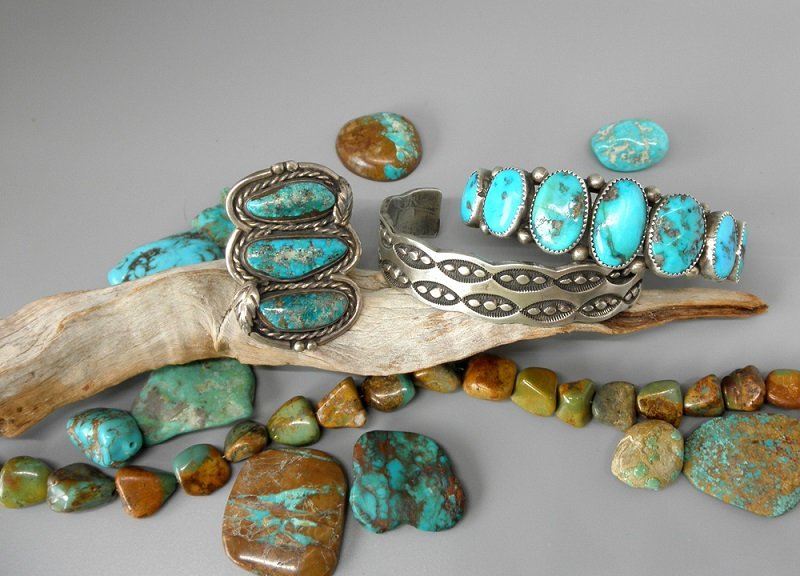
Turquoise has been esteemed for its unique color and cultural importance across many civilizations.
Turquoise is a copper silicate gemstone with a long history of use for ornamentation. Perhaps more than any other stone, turquoise occurs in a color that seems borderline unnatural. While the main association with it these days is Southwestern style silver jewelry, it’s been used across the world wherever it’s been found.
Being a copper mineral, turquoise was commonly found alongside rich copper deposits in the Middle East. In particular, Persia was a main source of the blue-green gemstone for the region. Turquoise is soft and easily worked with fairly primitive methods. While the deposit seems fairly minor today, in the past vast quantities of the stone were pulled from the Earth, enough that it was often used for architectural purposes like covering domes as the sky-blue mineral was thought to be close to Heaven.
It was also found on the Sinai peninsula, which supplied Egypt with a rich source of material. These days, little to no commercial mining happens in the region. This is one of the main reasons turquoise has become so expensive: it occurred in areas alongside mining for natural resources and most sources have been tapped out to some degree.
In the Americas, it was found in large amounts in areas across the Southwest. Today these regions form the states of Arizona, New Mexico, Nevada, and California. Turquoise has been used for ceremonial objects, beads, carvings, and other decorative purposes by various tribes, including the Navajo and Apache. This earlier turquoise work formed a more distinct style of jewelry starting in the 1860s, when silver became readily available through coinage brought from the young United States and Mexico.
Turquoise remains a fast favorite and almost transcends a general interest in rocks among many. The various varieties of it, its current rarity, and its historical significance have made turquoise identification its own specialized subset of understanding rocks and gems generally. While most of the market today is filled with various treated varieties, its hard to see the stone losing any momentum despite millennia of human use.
7. Malachite
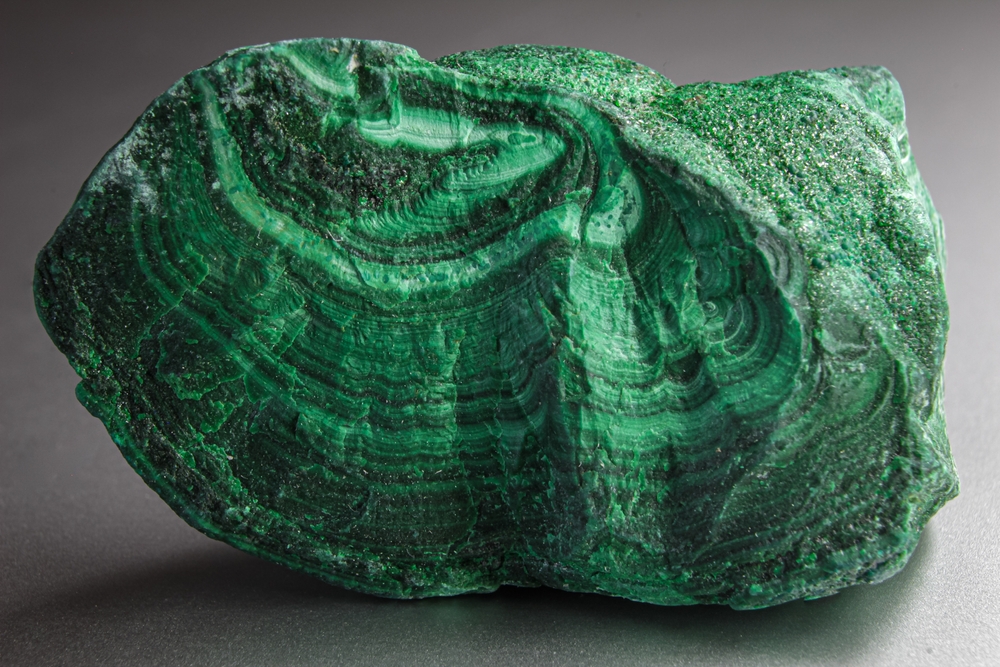
Malachite’s striking green patterns have made it a decorative staple from Egyptian times to the Renaissance.
Malachite is a deep green, generally banded copper mineral. It shows up in many places across the world, and it’s still prized for its deep color and intricate patterns. While it’s currently a fairly expensive material, and one that is often counterfeited, it actually has an incredibly long history of usage by humans.
Malachite was in use by both the Ancient Egyptians and the Greek and Roman civilizations. Like turquoise, malachite is a secondary mineral often found around copper mines. Copper is easy to work and has been invaluable to human development, most of the first metal tools were made of the material. Its close proximity to beautiful malachite likely drove the green stuff’s early mining.
Malachite has been carved and used in inlays for most of human history. It actually maintained a long-standing popularity. While the earliest malachite beads and artifacts are thousands of years old, it was a well-respected building material up until the Middle Ages. There’s also some evidence it had talismanic use, driving off evil spirits.
Malachite is a rather expensive material these days, and it is well-known that some precautions should take place working with it, but it remains a favorite of lapidary artists. This material’s evergreen popularity has made it prized since the beginning of human history, and its still worked into figurines, carvings, and jewelry in the modern age.
8. Obsidian
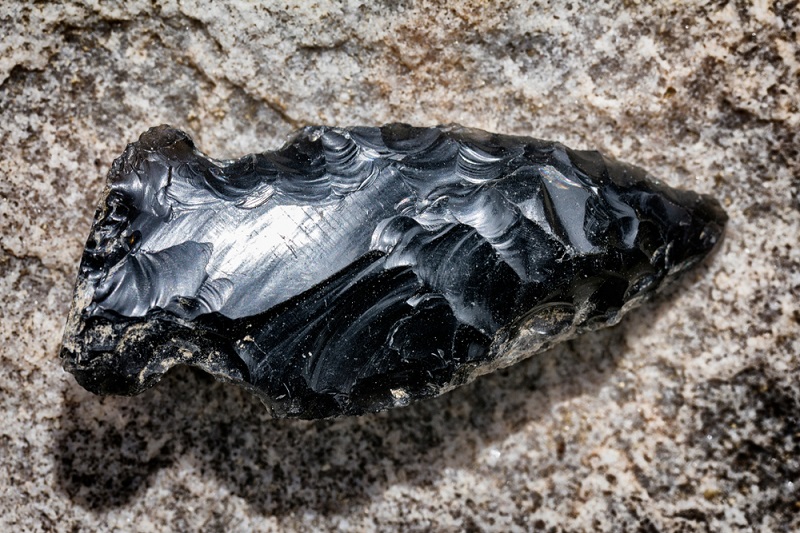
Obsidian’s sharp edge and deep black sheen have been shaping human craftsmanship from the earliest tools to modern art.
Obsidian is a black glass that forms when silica-rich magma is quickly cooled after an eruption. Unlike everything else on this list, it’s technically not a mineral. Obsidian is actually amorphous and lacks the internal crystalline structure that defines minerals, instead, it’s regarded as a naturally occurring mineraloid.
Obsidian’s lack of internal structure is actually what made it so valuable to early civilizations. Unlike most of the items on this list, obsidian was primarily used for practical tools although ceremonial objects also exist. The lack of internal structure makes obsidian very prone to conchoidal fracture, which can cause a razor-sharp edge to emerge when it’s broken.
The fact that it’s a glass also makes it less prone to some of the issues that plague other knappable stones. For this reason, it was a favorite for blades and projectile points of every type. Obsidian was also one of the earliest known trade goods, with networks bringing it across the United States and up from Mexico.
While flint and chert are both more common, they can be rougher to work with due to internal inconsistency in their microcrystalline structure. Obsidian’s black coloration actually comes from iron included in the flow, and many different varieties exist. Perhaps the best known is Rainbow Obsidian, which has inclusions of magnetite that create a play of color across the face of the stone when it is held up to the light.
While other stones suffice, obsidian is generally regarded as the most practical type. People, including myself, still knap it to this day to create points and blades. Others work the deep black material into carvings and cabochons since it takes a high polish and is internally consistent enough to allow for very detailed figures.
9. Quartz
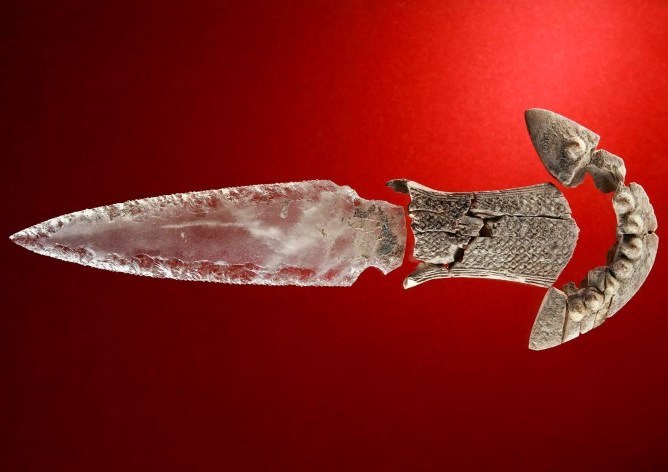
Quartz, in its clear, crystalline splendor, has been at the heart of rituals and technology, amplifying our connection to the Earth.
Quartz is one of the most common crystals on the planet. It’s a macro-crystallized form of silica, generally formed in the depths of sedimentary stone through the injection of silica-rich waters. As the material cools, it crystallizes into large, six-sided prisms that are still considered desirable to this day. It’s also water-clear in it’s best forms, making it a wonder in early times.
Quartz was used for a wide variety of purposes. It was used in rituals, often meant to amplify the powers being called upon and carried as a talisman. Rock crystal, which is very large quartz, has been formed into bowls, vases, and other larger objects for much of human history as well.
It’s also knappable. One of the most striking examples of ancient artisanship remains the 5,000 year old crystalline dagger found among other grave treasures in Spain but smaller points also turn up on occasion. It’s not an ideal material for the process, since the internal structure can interrupt the flaking process, but artifacts do show up.
In fact, the reason quartz is so vaunted is likely because it’s so common. There are thousands of locations around the planet where quartz crystals are still pulled from the ground and it makes up the same mineral family as jeweler favorites like amethyst and citrine.
One of the odder qualities possessed by quartz wasn’t known until relatively recently. Quartz is piezoelectric, meaning that it provides a small amount of energy when it suffers mechanical stress. This has made it a common power source for things like radios and watches, although synthetic quartz is generally used these days.
Quartz has an odd power over human fascination, and as such it remains one of the most commonly dug, bought, and sold minerals for collectors.

